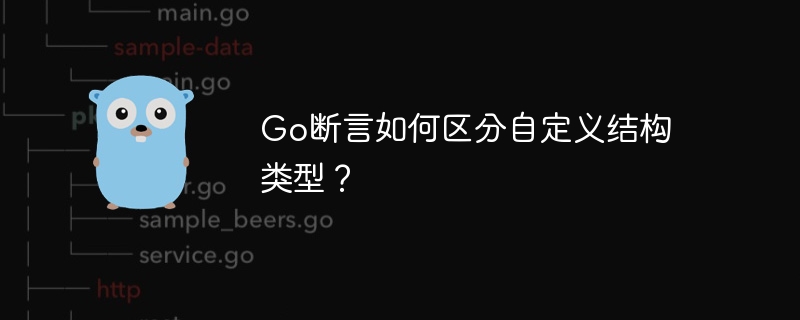Go断言如何区分自定义结构类型?

go 断言区分自定义结构类型
为了解决代码中遇到的断言报错问题,让我们来了解如何利用断言判断类型是否为自定义结构类型。
断言是一种语法机制,用于将一个 interface{} 类型的值转换为一个更具体的类型。在您的代码中,报错的原因是尝试将 config.templateargs["file"] 断言为 textfile 结构体类型,但实际类型是一个 map[string]interface{}。
要正确判断类型,可以采用以下方法:
-
使用类型开关
switch t := config.templateargs["file"].(type) { case textfile: // 执行操作 default: // 处理其他类型 }
此方法使用类型开关检查实际类型,并根据匹配的类型执行不同的操作。
-
利用接口类型断言
if file, ok := config.templateargs["file"].(interface{ content string }); ok { file.content = string(content) }此方法将 interface{} 值断言为一个具有 content string 方法的接口类型。如果断言成功,将获取此接口值的指针并进行操作。
-
重新赋值
config.templateargs["file"] = textfile{ file: config.templateargs["file"].(textfile).file, content: string(content), }此方法重新分配 config.templateargs["file"],创建一个新的 textfile 结构体并将其赋值给此键。
-
赋值指针
config.TemplateArgs["file"].(*TextFile).Content = string(content)
此方法将指针赋值给 config.templateargs["file"] 中的 textfile 结构体,允许直接修改其 content 字段。
以上就是Go断言如何区分自定义结构类型?的详细内容,更多请关注其它相关文章!
